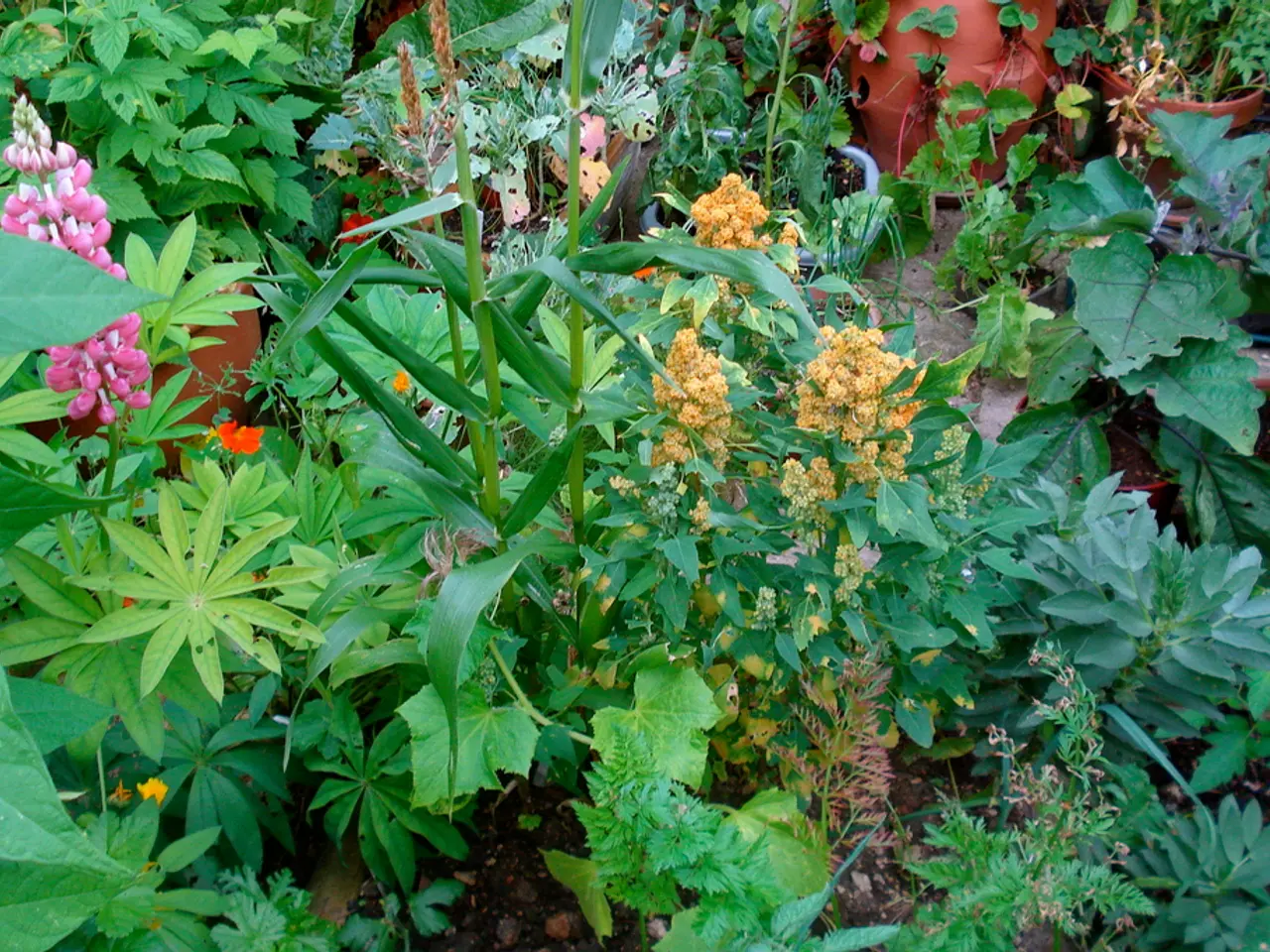Simplifying Container Gardening: Essential Knowledge for Thriving Container-Based Horticulture
In the world of gardening, space is often a limiting factor for many enthusiasts. However, container gardening offers a practical solution, allowing gardeners to grow a variety of plants in limited spaces such as balconies, patios, or even fire escapes. This article will guide you through the key steps to starting a flourishing container garden.
Choose Appropriate Containers
The first step is to select containers that are suitable for your plants. Containers made of plastic, ceramic, wood, or metal are all suitable, provided they have proper drainage holes to prevent waterlogging. The size of the container should be slightly larger than the plants' rootballs to provide enough space without excess that retains too much water.
Select Quality Soil
Using high-quality, all-purpose potting soil is essential for a thriving container garden. This soil should be formulated with perlite or vermiculite for good drainage, and compost or organic matter to retain moisture. Regular garden soil is heavier and less suitable for containers, so it's best to avoid using it.
Prepare the Container
Before planting, moisten the soil. You can create a water reservoir at the bottom by layering saturated pea straw or by placing upside-down plastic pots. Fill the container to within about 1 inch of the rim to allow watering space.
Choose Suitable Plants
When selecting plants, opt for those that do well in containers such as herbs, vegetables, and flowers with varying shapes. Consider the root and mature size requirements to match the container size.
Planting and Placement
Plant with care after preparing the soil. Arrange containers where plants get adequate sunlight or shade depending on the species, and group pots to mitigate harsh weather conditions. Ensure easy access for maintenance tasks like watering and harvesting.
Watering and Fertilizing
Water thoroughly when the top 1-2 inches of soil feel dry, which may be frequent during hot weather. Consider self-watering containers to maintain moisture levels. Fertilize regularly with a balanced slow-release or liquid fertilizer during the growing season, as nutrients deplete faster in containers.
Maintenance
Remove spent blooms (deadheading) to keep plants healthy and encourage more flowers. Monitor for pests and ensure proper ventilation or airflow around plants.
Container gardening is not only beneficial for those with limited space but also for gardeners with poor soil, beginners, or those dealing with pest issues like moles. With the right containers, soil, and plants, you can grow a variety of plants, including strawberries, compact cherry tomatoes, lettuce, spinach, peppers, geraniums, coral bells, stonecrops, caladiums, herbs like basil, lavender, thyme, chives, hydrangea, azalea, and hebe.
For those interested in growing tomatoes, sign up for the platform's newsletter to receive a free e-book "How to Grow Delicious Tomatoes." Container gardening for beginners does not require a lot of specialist knowledge, making it an accessible hobby for many.
In colder climates, container gardening in winter is not something to be afraid of, but hardiness zones should be considered. Overwintering perennial plants is necessary to extend their life, by comparing hardiness zones with the plant's hardiness tolerance.
The choice of plants for container gardening depends on whether you wish to grow in sunny areas or in shade. Climbing plants like peas require a trellis for container gardening. With these steps, you can create a thriving container garden even in small spaces. Happy gardening!
- Select containers suitable for your plants, such as those made of plastic, ceramic, wood, or metal, ensuring they have proper drainage holes to prevent waterlogging and are slightly larger than the plants' rootballs.
- For a thriving container garden, opt for high-quality, all-purpose potting soil that is formulated with perlite or vermiculite for good drainage and compost or organic matter to retain moisture.




